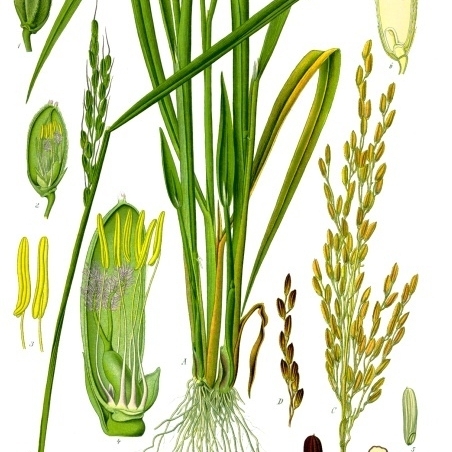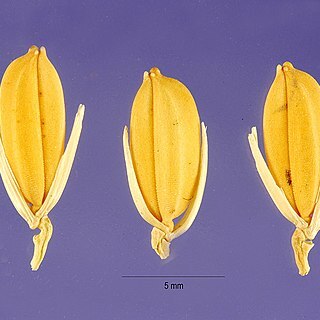An annual grass. Most varieties have a reddish colour. It grows 1.5 m but can be 5 m in some floating kinds. Dryland types often form tufts and floating rice often branches. The leaves are alternate and simple. The leaf sheath is 25 cm long. The leaf blade is 20-25 cm long and 6-9 mm wide. The flowers are in a compact group 25 cm long at the top of the plant. The fruit is a grain 9 mm long by 3 mm wide.



